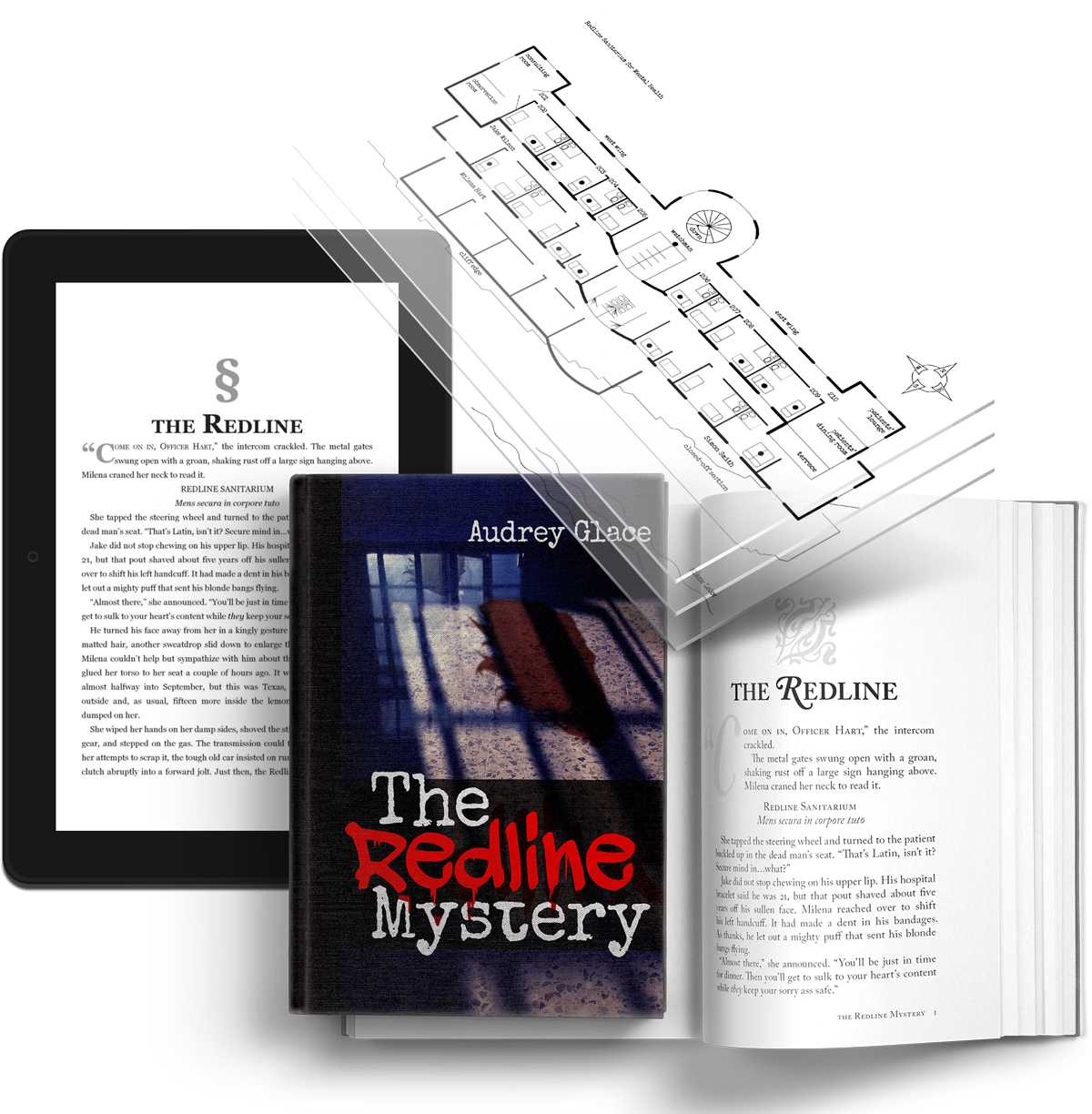

SAFE MIND IN A SAFE BODY, says the rusty sign hanging above the Redline Sanitarium gates. The thick ramparts topped by sharp spikes have something different to say. The ramshackle asylum, housing five mental patients and a skeleton staff, is perched at the top of a harsh cliff overlooking the Black Lake. This is where Officer Milena Hart brings a suicidal young man on a hot Texas evening.
After delivering her patient into Redline custody, Milena stays at the sanitarium overnight. Much is unnerving about the creaky old mansion in the middle of big sky nowhere, surrounded by the thousand eyes of the prairie and the fumes rising from the dark waters. Milena alternates between feeling cozy and disturbed, settling on the latter when a strange old woman warns her to beware the demon wolf out on the prowl.
Everything considered, Milena is looking forward to leaving the next morning—but she has counted without the Redline. During the physicians' dinner, the new patient reattempts suicide, or at least the staff are satisfied to believe he does. Small things about the incident do not add up to Milena's satisfaction, and there is a trace of rot in the air that convinces her to stay behind and uncover the Redline mystery.
If you've ever turned the pages of a mystery novel so fast you had no time to eat and sleep, we have something in common. I was hooked on detective stories early on and they remain my comfort reads. I've always preferred closed circle mysteries that kept the characters confined until the crime was solved (or everyone died). I liked it when the setting had a creepy vibe and a ghastly history. I loved it when the book presented me with an impossibility that was unraveled at the end. I felt good about myself when I guessed who'd done it before the detective, and I felt satisfied when I didn't.
I finally wanted to write my own detective novel, gathering all my favorite tropes in one place. I chose an isolated mental health facility as its setting. The Redline Sanitarium feels cozy to me even though the characters don't like it much. The planned book expanded into three when I realized there was a lot that could have happened at the Redline. They will be published when they are ready.
The book is set in the United States, but the Redline Sanitarium is a European-style building. I modeled it after the Eastby Sanatorium in North Yorkshire, UK, which was built in 1902-3 and demolished in 1940. These pictures come from The Workhouse in Bradford, Yorkshire, W. Riding and Eastby Sanatorium.
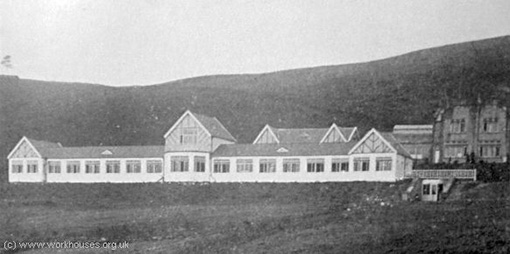
Bradford Eastby Sanatorium patients' block from the south-east, c.1905. © Peter Higginbotham. Source.
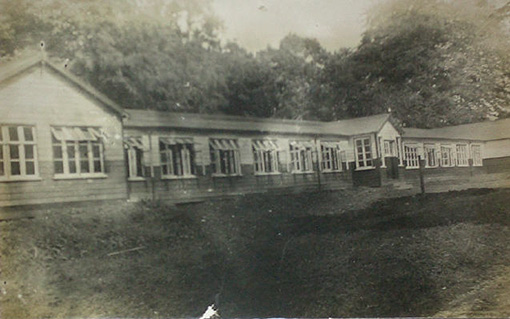
Eastby Sanatorium. Source.
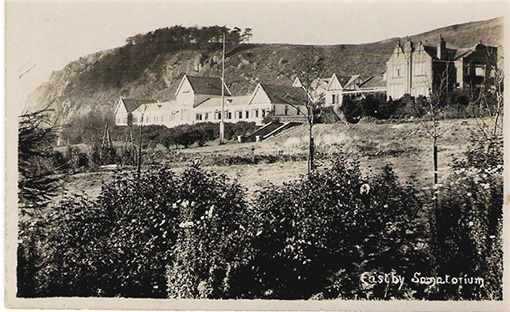
Eastby Sanatorium. Source.
The Eastby Sanatorium operated for the treatment of tuberculosis, so I adjusted the Redline's exterior and interior to fit its different purpose. Still, the two bulidings share the simple design style that caught my eye in the photos of Eastby. It doesn't look like a cliched haunted place--in fact it looks really cozy upon approach.
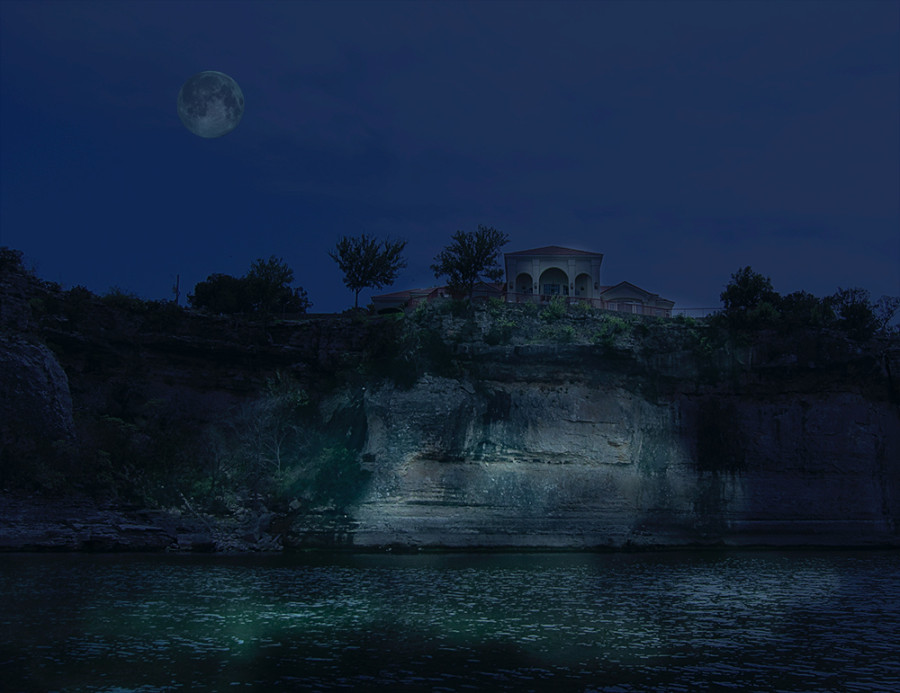
Possum Kingdom Lake is the real-world counterpart of the Redline's Black Lake. This heavily altered photo is how I imagine the sanitarium would look like under a harvest moon. It's not a perfect representation; this house is not the right shape or size for the building, and the Redline doesn't have a protective fence on the edge of the cliff, not to mention there's no boating on the Black Lake.
The rest of the photos represent what the Redline grounds are supposed to look like: fields, shrubs, and cacti, with big skies on top.


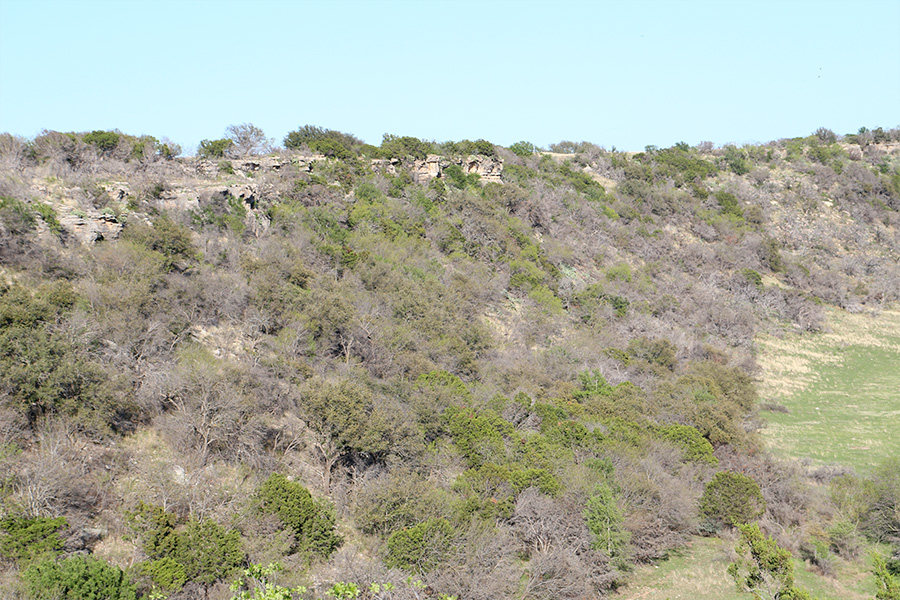
"If a wolf sees a man before the man sees the wolf, the man will lose his voice," Milena learns from very early on. The quote, and the symbolism associated with it, come from a compendium of animal stories from the middle ages called The Medieval Bestiary. The story writers associate animals with moral and religious representations; for example, the wolf used to be a symbol of the devil. The entry on the Wolf has a beautiful gallery of illustrations.
The story collection is a very pleasant and fresh read. Here's part of the description of the Cat, defined as "An animal that is hostile to mice." I think this might be the cutest thing I've ever read:
"He is a full lecherous beast in youth, swift, pliant, and merry, and leapeth and reseth on everything that is to fore him: and is led by a straw, and playeth therewith: and is a right heavy beast in age and full sleepy, and lieth slyly in wait for mice."